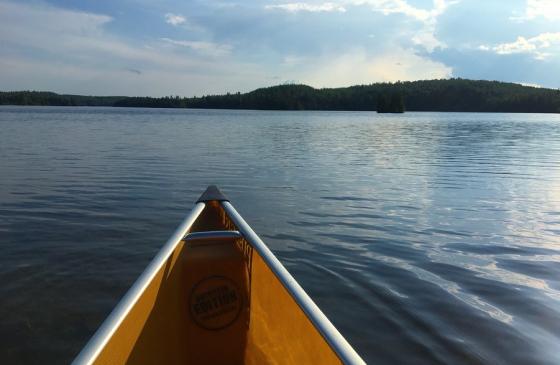The Bureau of Land Management (BLM) and U.S. Forest Service have the ability to ensure the permanent protection of the Boundary Waters Canoe Area Wilderness (Boundary Waters), America’s most visited wilderness. In response to the potential for negative impacts from proposed sulfide-ore copper mines along the wilderness edge, the BLM and the Forest Service can recommend that the Secretary of the Interior exercise her authority under the Federal Land Policy and Management Act (FLPMA) to withdraw the federal lands within its watershed from the mineral leasing laws for twenty years.
A mineral withdrawal would start with a two-year segregation period for the federally managed minerals within Boundary Waters watershed. The segregation period would allow land managers to hit the “pause” button, retain the status quo, and weigh carefully the impacts of proposed sulfide-ore copper mining before granting companies the right to mine next to the Boundary Waters. The public, transparent process would allow the best science to prevail, as well as encourage robust public involvement in deciding what is the best future for the Boundary Waters.
The proposed mineral withdrawal protects the status quo:
- Temporary Segregation: Subject to valid existing rights, the Interior Department would segregate a specific acreage of federal minerals on National Forest lands in the Boundary Waters watershed from mineral leasing laws. The segregation would prevent the issuance of new permits and leases in the designated area and would last for up to two years.
- Analyses: During the segregation period, studies and environmental analyses would be conducted to determine if the National Forest lands should be withdrawn to protect the Boundary Waters.
- Public process: During the segregation period, the Forest Service and the BLM would hold a public process to consider information provided by the public and important stakeholders about the importance of the Boundary Waters. At the end of the process, the Secretary of Interior would make a decision on the proposed 20-year withdrawal.
- Valid, pre-existing rights: Neither a segregation for up to two years, nor any subsequent withdrawal, would prohibit ongoing or future mining on valid pre-existing rights. Neither a segregation nor a mineral withdrawal would prohibit any other authorized uses on these lands.
This step would be consistent with over a century of action to protect the Boundary Waters:
- Five federal laws (1911, 1930, 1949, 1964, 1978); three Minnesota state laws (1933; 1976; 2003); Minnesota administrative action (1991); and two Presidential declarations (1909, 1949) all sought to protect the Boundary Waters from harmful development, including in many instances from mining.
- The 1978 Boundary Waters Act established a Mining Protection Area next to the Boundary Waters and within the Superior National Forest but was unable to create comprehensive protection due to two mineral leases issued in 1966. The 1978 Boundary Waters Act is silent on whether mining should be allowed in the Superior National Forest outside of the Boundary Waters and the Mining Protection Area. With respect to the Boundary Waters and the Mining Protection Area, the 1978 Act directs the Forest Service to:
o Provide for the protection and management of the fish and wildlife of the wilderness so as to enhance public enjoyment and appreciation of the unique resources of the region
o Protect and enhance the natural values and environmental quality of the lakes, streams, shorelines and associated forest areas of the wilderness
o Maintain high water quality in such areas
o Minimize to the maximum extent possible, the environmental impacts associated with mineral development affecting such areas
- In 2008 Minnesotans voted overwhelmingly to increase their own sales taxes to fund the Clean Water, Land and Legacy Amendment to the Minnesota Constitution that protected clean water and forests, proving how much Minnesotans care about clean water and the Northwoods.
Precedent exists for federal protection in similar instances:
- Federal action has protected special places in very similar circumstances, including Yellowstone National Park (1996 and 2018), Montana’s Rocky Mountain Front in Lewis and Clark National Forest (1997 and 2000), Grand Canyon National Park (2012), and SW Oregon Wild and Scenic Rivers (2015).
- Land withdrawals have been crucial tools of public lands management policy for over a century, dating from before the 1910 Picket Act that expressly gave the power to the President.
In the end, there are some places that you shouldn’t mine. The BLM and Forest Service have the ability to take the necessary steps within their purview as responsible land managers to make sure we don’t risk the Boundary Waters
